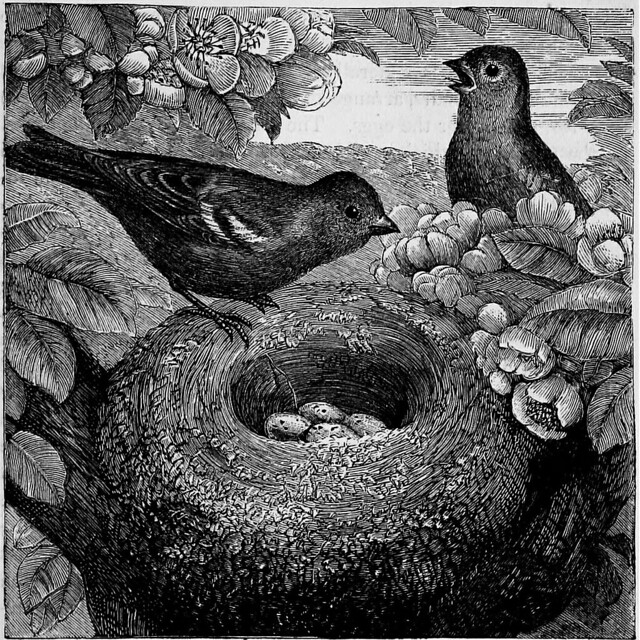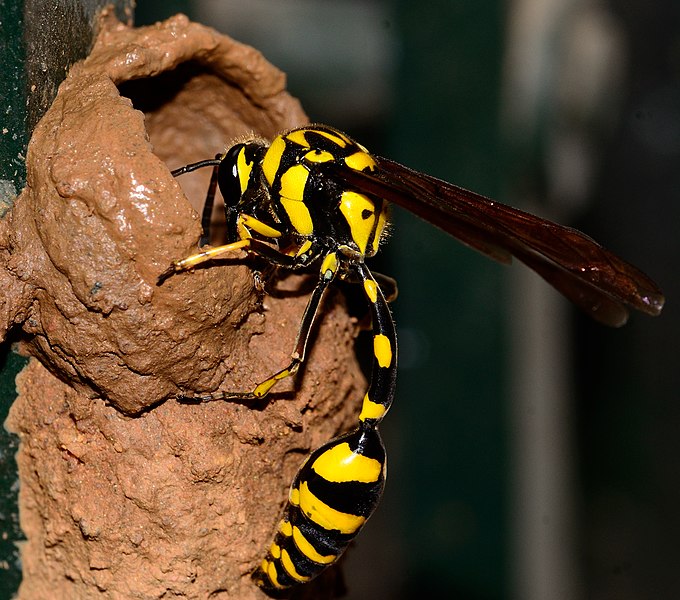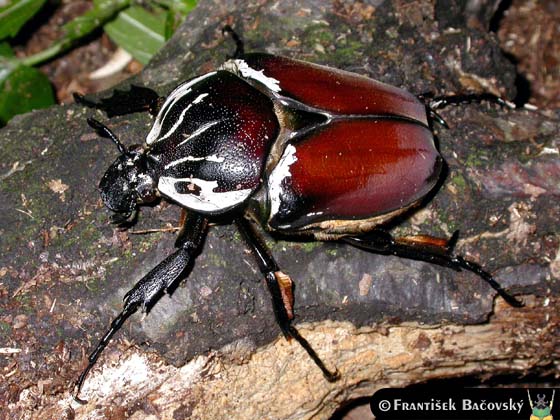Biology Worthy of Life
An experiment in revivifying biology
Scenes of Life
We in the twenty-first century have inherited a rich and extensive library of descriptive literature about living things, their habitats, and their mutual relations, bequeathed to us over the centuries by dedicated naturalists. Unfortunately, in this age of molecular biology and genetic preoccupation, the vocation of the naturalist has lost a great deal of the scientific prestige it once enjoyed. Today the biologist can easily pass through her schooling and into a pristine laboratory without ever having studied in its natural habitat the animal whose destiny she then proceeds to alter.
The narratives below, culled from various sources, afford only fragmentary glimpses of the larger panorama of life on earth. But they are enough to remind us of the “miracle” that life can so easily appear to be. The reminder is a useful one, especially if it stimulates us toward efforts of understanding that are not unduly constrained by the prevailing wisdom.
(1)
The obscure wisdom of the potter wasp
From biologist, novelist, and science philosopher, E. L. Grant (1964, pp. 85-6).
“Among the fascinating stories of animal life told by the French naturalist Henri Fabre is that of the [potter wasp] Eumenes. The fertilized female builds a little domed house of sand spicules on some stone or rock foundation. The foundation ring is traced in minute pebbles. On this she builds a series of concentric rings, each diminishing in circumference, so as to enclose a domed space. At the top she leaves a hole. She then begins collecting certain species of small caterpillars. She stings these into a partial paralysis, but does not kill them, for they will be needed as fresh meat for the young she will never see.
“When the wasp has collected either five or ten caterpillars, she prepares to close the dome, reducing the size of the hole. She now goes through a complicated process which would seem to indicate foresight on her part. Yet she has no foresight, only a highly developed instinct. From her ovipositor she excretes a juicy substance, working it with her legs into a narrow, inverted cone. With a thread of the same substance, she stitches the cone to the top of her domed building. Into the inverted cone, she lays an egg. She then seals up the hole, leaving the egg safe within the cone, suspended on a thread. This done, she goes off and builds another dome to repeat the same cycle of events.
“In a short time the egg hatches into a tiny, white grub, so helpless and delicate that if placed among the still-living caterpillars on the floor of the dome, it would inevitably be injured. In its cradle it is safe. When hungry it spins a thin thread of its own, on which it descends and takes a bite of caterpillar. If the wriggling caterpillars appear threatening, it can retreat up the thread, and wait. In this way the grub spends its infancy; but, as it grows stronger, it risks a final descent, and devours, at its leisure, the still living food that mother has so satisfactorily provided.
“From the domes that contain five caterpillars male wasps emerge; from where there are ten caterpillars, the larger female wasps. This raises an interesting question: Does the amount of food determine the sex? The mother wasp, who appears throughout her lifetime as a highly nervous and brilliantly alive creature, has built just the right sort of houses for the offspring she will never see; and has provided just the right amount of food. She is singularly well-adapted for her life; she stings the caterpillars just enough to keep them quiet, but not enough to kill them; she packs each dome with the right amount of food for male or female grub. The suspended cradle protects the tender infant from the rough reactions of the caterpillars while being eaten. Everything is in order, and as the emerging wasp dries her wings in the summer sunshine, she must surely feel that God is in his heaven, and all is well with the world. The caterpillars might harbour different sentiments …”
(2)
On the nesting cycle of the chaffinch

From a 1927 description by the British naturalist and ornithologist, Edward Max Nicholson:2
“The male must leave the flock, if he has belonged to one, and establish himself in a territory which may at the time be incapable of sustaining him alone, but must later in the season supply a satisfactory food-supply for himself, his mate and family, and for as many birds of other species as overlap his sphere of influence. He must then sing loudly and incessantly for several months, since, however soon he secures a mate, trespassers must be warned off the territory, or, if they ignore his warning, driven out.
“His mate must help with the defence of the territory when she is needed; pairing must be accomplished; a suitable site must be found for the nest; materials must be collected and put together securely enough to hold five bulky young birds; eggs must be laid in the nest and continuously brooded for a fortnight till they hatch, often in very adverse weather; the young are at first so delicate that they have to be brooded and encouraged to sleep a great part of the time, yet they must have their own weight of food in a day, and in proportion as the need of brooding them decreases, their appetites grow, until in the end the parents are feeding four or five helpless birds equal to themselves in size and appetite but incapable of digesting nearly such a wide diet.
“Enemies must be watched for and the nest defended and kept clean. When the young scatter, often before they can fly properly, they need even greater vigilance, but within a few days of the fledging of the first brood a second nest will (in many cases) be ready and the process in full swing over again. All this has to be done in face of great practical difficulties by two creatures, with little strength and not much intelligence, both of whom may have been hatched only the season before.”
(3)
Migration
The arctic tern migrates every year between its residences at opposite poles of the earth. The meandering and partly improvised course of its annual round trip, shaped to take advantage of prevailing winds, amounts to as much as 56,000 miles (90,000 km) — well more than twice the entire circumference of the earth, and mostly over the “pathless” sea (Fijn et al. 2013). For mating, the tern usually returns time and again to the same northern colony. The slender bird accomplishing these feats, armored against the elements with nothing but delicate feathers, weighs about 4 ounces (110 g).
Many factors have been proposed to explain bird migration in general: navigation is variously said to be guided by sun and stars, earth’s magnetic field, environmental cues such as odors and visual landmarks, and “mental maps” constructed from experience. It’s commonly thought that, with any given migrating species, a number of such factors may play a role.
![]()
![]()
 Monarch butterfly
(Danaus plexippus) on a milkweed
plant.3
Monarch butterfly
(Danaus plexippus) on a milkweed
plant.3
Huge numbers of migrating monarch butterflies, starting from as far away as the northern midwest and eastern Canada, home in on a single wintering location in central Mexico with the precision of an intercontinental ballistic missile — except that the trajectories followed by the butterflies are hardly missile-like. Different groups follow separate paths, and these paths vary depending on conditions. Migration routes may also evolve historically: apparently there are no mentions of monarch butterflies in American colonial times, and it’s been argued that the insects moved northward to take advantage of the luxuriance of larval host plants following the deforestation of northeastern America.4
In any case, none of the butterflies traveling from Canada or the northern United States to Mexico has had any previous life experience of that journey. The return trip northward in the spring occurs only over several generations, so there are no experienced “guide butterflies” to lead the way in either direction.
(4)
A fatal spitting accuracy
You may have heard about the archerfish, found in warmer waters of the far east. This fish “spits” a forceful stream of water sufficient to dislodge an insect from its sticky attachment to a stem or leaf up to at least two meters away. Of course, when looking from the water into the air, the fish must correctly compensate for the same refraction of light that, in our own experience, makes a stick look “bent” at the point where it enters the water.
That itself is mystifying enough. But researchers recently showed that the archerfish’s achievement is even more startling. This cunning hunter emits its lethal jet in such a way that the last water released (the trailing part of the stream) eventually catches up with the water released earlier — and does so right at the distance where the insect is located, making for maximum force of impact. Moreover, the way to do this changes a great deal, depending on whether the insect is 10 cm away or, say, 100 cm.
The gathering of water in the fish’s mouth, its dynamic shaping, and the force of propulsion imparted to the stream in order to achieve the proper result at each distance, are extraordinarily complex — and not fully understood. But researchers, in testing the fish with targets at 20 cm, 40 cm, and 60 cm, reported that “jet tips recorded just before impact were equally well focused, and their shapes bore no information on how long they had traveled before” (Gerullis and Schuster 2014). That is, the fish adjusted the dynamics and timing elements of its water jet in order to have it “come together” in just the right way at whatever distance the target resided.
(5)
A surgical “battlefield”
The challenges an organism faces can demand fiendishly complex responses. These may require an almost infinite number of molecular interactions that neither this organism nor its ancestors have ever before carried out in the same, highly coordinated pattern. Wound healing offers endless examples. Here is a description offered by English biologist Brian Ford (2009):
“Surgery is war. It is impossible to envisage the sheer complexity of what happens within a surgical wound. It is a microscopical scene of devastation. Muscle cells have been crudely crushed, nerves ripped asunder; the scalpel blade has slashed and separated close communities of tissues, rupturing long-established networks of blood vessels. After the operation, broken and cut tissues are crushed together by the surgeon’s crude clamps. There is no circulation of blood or lymph across the suture.
“Yet within seconds of the assault, the single cells are stirred into action. They use unimaginable senses to detect what has happened and start to respond. Stem cells specialize to become the spiky-looking cells of the stratum spinosum [one of the lower layers of the epidermis]; the shattered capillaries are meticulously repaired, new cells form layers of smooth muscle in the blood-vessel walls and neat endothelium; nerve fibres extend towards the site of the suture to restore the tactile senses...These phenomena require individual cells to work out what they need to do. And the ingenious restoration of the blood-vessel network reveals that there is an over-arching sense of the structure of the whole area in which this remarkable repair takes place. So too does the restoration of the skin. Cells that carry out the repair are subtly coordinated so that the skin surface, the contour of which they cannot surely detect, is restored in a form that is close to perfect.”
Of course, we cannot even begin to picture the specific movements of the countless molecules and millions of cells in the damaged area. So we analyze the situation in terms of its general principles. The body, on the other hand, must be master of the actual material activities, in all their details. It must in some sense — although not at all in an obvious one — know what it is doing. All these details must “hold together” as they lead toward a future state of health.
(6)
On metamorphosis
Millions of species, from innumerable marine organisms to frogs to butterflies, undergo one or another sort of metamorphosis during their development. Here I draw from a description of the goliath beetle offered by British physician and evolutionary scientist, Frank Ryan (2011, pp. 104-5):
“Rather than a den of repose, we see now that the enclosed chamber of the goliath’s pupa really is a crucible tantamount to the mythic pyre of the phoenix, where the organic being is broken down into its primordial elements before being created anew. The immolation is not through flame but a voracious chemical digestion, yet the end result is much the same, with the emergence of the new being, equipped with complex wings, multifaceted compound eyes, and the many other changes necessary for its very different lifestyle and purpose.
“The emerging adult needs an elaborate musculature to drive the wings. These muscles must be created anew since they are unlike any seen in the larva, and they demand a new respiratory system — in effect new lungs — to oxygenate them, with new breathing tubes, or tracheae, to feed their massive oxygen needs. The same high energy needs are supplied by changes in the structure of the heart, with a new nervous supply to drive the adult circulation and a new blood to make that circulation work. We only have to consider the dramatic difference between a feeding grub or caterpillar and a flying butterfly or a beetle to grasp that the old mouth is rendered useless and must be replaced with new mouthparts, new salivary glands, new gut, new rectum. New legs must replace the creepy-crawly locomotion of the grub or caterpillar, and all must be clothed in a complex new skin, which in turn will manufacture the tough new external skeleton of the adult. Nowhere is the challenge of the new more demanding than in the nervous system — where a new brain is born. And no change is more practical to the new life-form than the newly constructed genitals essential for the most important new role of the adult form — the sexual reproduction of a new generation. The overwhelming destruction and reconstruction extends to the very cells that make up the individual tissues, where the larval tissues and organs are broken up and dissolved into an autodigested mush … To all intents and purposes, life has returned to the embryonic state with the constituent cells in an undifferentiated form.”
Looking at the pupal case of a fly, the developmental biologist and evolutionary theorist, Wallace Arthur, asked: “What on earth is going on in there to turn one animal into another? If we didn’t know better, we might venture ‘magic’ as our best attempt at an answer (Arthur 2004, p. 45). Arthur’s wonder is justified. And he surely expects, as we must, that a more satisfactory answer than “magic” will be forthcoming. Meanwhile, it is worth keeping in mind that the “magical” impression of a phenomenon becomes more powerful in direct proportion to the inadequacy of our usual explanatory resources.
(7)
A deceptive fragility
From Walter B. Cannon, an American physiologist who worked during the first half of the twentieth century:6
“Our bodies are made of extraordinarily unstable material. Pulses of energy, so minute that very delicate methods are required to measure them, course along our nerves. On reaching muscles they find there a substance so delicately sensitive to slight disturbance that, like an explosive touched off by a fuse, it may discharge in a powerful movement. Our sense organs are responsive to almost incredibly minute stimulations. The sensory surface in the nose is affected by vanillin, 1 part by weight in 10,000,000 parts of air. And as for sight, there is evidence that the eye is sensitive to 5/1,000,000,000,000 erg, an amount of energy which is 1/3,000 that required to affect the most rapid photograph plate.
“The instability of bodily structure is shown also by its quick change when conditions are altered. For example, we are all aware of the sudden stoppage of action in parts of the brain, accompanied by fainting and loss of consciousness, that occurs when there is a momentary check in the blood flow. Indeed, the high degree of instability of the matter of which we are composed explains why drowning, gas poisoning, or electric shock promptly brings on death. Examination of the body after such an accident may reveal no perceptible injury that would adequately explain the total disappearance of all the usual activities. But there are subtle changes in the readily mutable stuff of the human organism which prevent, in these conditions any return of vital processes.
“When we consider the extreme instability of our bodily structure, its readiness for disturbance by the slightest application of external forces and the rapid onset of its decomposition as soon as favoring circumstances are withdrawn, its persistence through many decades seems almost miraculous. The wonder is increased when we realize that the system is open, engaging in free exchange with the outer world, and that the structure itself is not permanent but is continuously broken down by the wear and tear of action, and as continuously built up again by processes of repair …
“There is also resistance to disturbances from within. For example, the heat produced in maximal muscular effort, continued for twenty minutes, would be so great that, if it were not promptly dissipated, it would cause some of the albuminous substances of the body to become stiff, like a hard-boiled egg. Again, continuous and extreme muscular exertion is accompanied by the production of so much lactic acid in the working muscles that within a short period it would neutralize all the alkali contained in the blood, if other agencies did not appear and prevent that disaster. In short, well-equipped organisms — for instance, mammalian forms — may be confronted by dangerous conditions in the outer world and by equally dangerous possibilities within the body, and yet they continue to live and carry on their functions with relatively little disturbance.”
(8)
Immobile wisdom
 Coyote tobacco plant
(Nicotiana attenuata).
Coyote tobacco plant
(Nicotiana attenuata).
The coyote tobacco plant (Nicotiana attenuata) of the western United States and Canada and northern Mexico implements a strategy with its insect predators no less sophisticated than that of any mammal dealing with a wolf or lion — except that the tobacco plant cannot scurry away on four legs or retreat into a burrow.
“The plant senses the amino acid compounds in a caterpillar’s saliva and responds with an alarm signal — a hydraulic or electrical pulse through its stems and leaves. Within minutes, the plant’s cells rev up their production of nicotine, a poison that interferes with an animal’s muscle function. When attacked, a single wild tobacco leaf can pack in a half a cigarette carton’s worth of nicotine. But some caterpillars, such as hawkmoths, have evolved a way to pass that poison through their gut instead of absorbing it, forcing wild tobacco to unearth new countermeasures. The plant produces compounds that inhibit digestion and make the caterpillar sluggish [and therefore more susceptible to attack by predators], as well as abrasives that wear down the attacker’s mouthparts” (Pennisi 2018).
But there is more, for when hornworm larvae eat the tobacco leaves, the plant produces various volatile compounds that can attract Geocoris species (“big-eyed bugs”) that prey on the larvae. And when the volatile compounds come in contact with the saliva of a larva, they go through a change that makes the larva even more attractive to the bugs, so that the modified compounds become, in effect, “signposts” directing the bugs to the larva’s exact location. Further, even in the absence of direct attack, the tobacco plant may ready its defenses as a result of chemical signals emitted from neighboring plants whose leaves are already being eaten.
Finally, when eaten by certain night-feeding larvae that, as adults, are also pollinators, the tobacco plant goes through physiological changes that can, in as little as eight days, shift its flower-opening and pollination time from night to day, when it benefits from different pollinators. At the same time, the flowers reduce their production of a chemical that is attractive to predators.
All this is accomplished without anything like an animal brain. Nevertheless, the coyote tobacco plant clearly “knows” how to coordinate its resources in a meaningful and effective dialogue with its neighbors and its predators.
Notes
1. Photo by Rama Warrier [CC BY-SA 4.0].
2. Quoted in Russell 1938, pp. 7-8. I have added paragraph breaks. The book by Nicholson is entitled How Birds Live: A Brief Account of Bird-Life in the Light of Modern Observation, and was published in London by Williams and Norgate, Ltd., in 1927.
The engraving of a chaffinch pair and their nest is from a book published in 1866 and titled, Homes Without Hands: Being a Description of the Habitations of Animals, Classed According to Their Principle of Construction, by John George Wood and others. For more information, see The Internet Archive Book Images.
3. Monarch butterfly photo credit: Craig Holdrege.
4. Also, some butterflies today follow routes down the eastern coast to overwintering sites in Florida, and others end up along the Gulf Coast. In the west, there are populations that migrate between the Rocky Mountains and the coast of California.
5. Goliath beetle photo credit: Frantisek Bacovsky.
6. Cannon 1939, pp. 19-23. The original text has been slightly condensed.
Sources:
Arthur, Wallace (2004a). Biased Embryos and Evolution. Cambridge UK: Cambridge University Press.
Cannon, Walter B. (1939). The Wisdom of the Body. New York: W. W. Norton.
Gerullis, Peggy and Stefan Schuster (2014a). “Archerfish Actively Control the Hydrodynamics of Their Jets”, Current Biology vol. 24 (Sep. 22), pp. 2156-60. doi:10.1016/j.cub.2014.07.059
Ford, Brian J. (2009). “On Intelligence in Cells: The Case for Whole Cell Biology”, Interdisciplinary Science Reviews vol. 34, no. 4 (Dec.), pp. 350-65. doi:10.1179/030801809X12529269201282
Fijn, Ruben C., Derick Hiemstra, Richard A. Phillips and Jan van der Winden (2013). “Arctic Terns Sterna paradisaea from the Netherlands Migrate Record Distances Across Three Oceans to Wilkes Land, East Antarctica”, Ardea vol. 101, no. 1, pp. 3-12. doi:10.5253/078.101.0102
Pennisi, Elizabeth (2018). “Nature’s Strategies: A Plant That Stands and Fights — The Wild Tobacco Plant Sounds Off When It’s Under Attack”, Science vol. 359 no. 6379 (Mar. 2), p. 985. doi:10.1126/science.359.6379.985
Russell, E. S. (1938). The Behaviour of Animals. London: Edward Arnold.
Ryan, Frank (2011). The Mystery of Metamorphosis: A Scientific Detective Story. Foreword by Dorion Sagan and Lynn Margulis. White River Junction VT: Chelsea Green Publishing.
Watson, E. L. Grant (1964). The Mystery of Physical Life, Hudson NY: Lindisfarne Press. Originally published in 1943.
This document: https://bwo.life/org/comm/ar/2018/scenes_35.htm
Steve Talbott :: Scenes of Life




